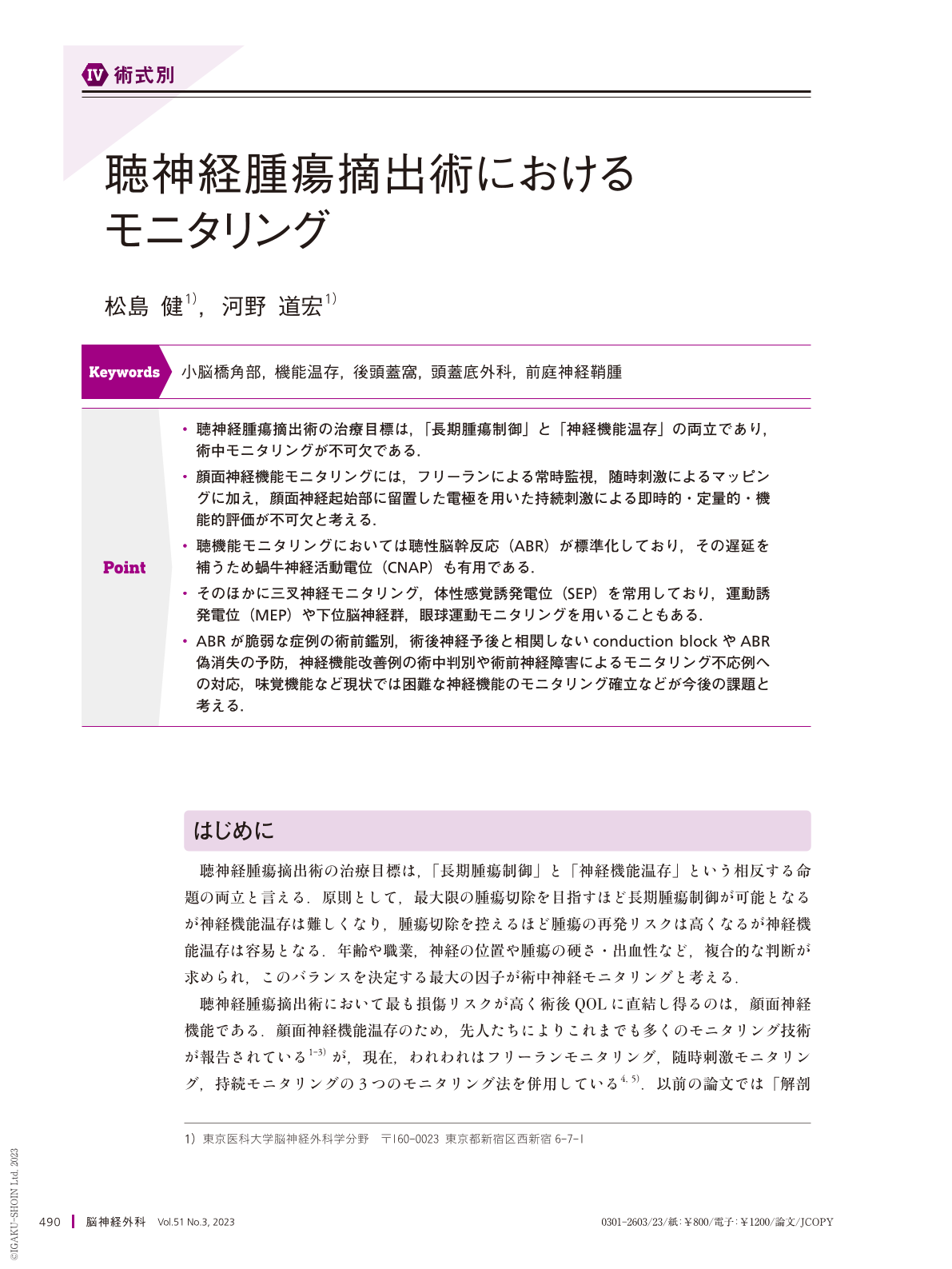Japanese
English
- 有料閲覧
- Abstract 文献概要
- 1ページ目 Look Inside
- 参考文献 Reference
Point
・聴神経腫瘍摘出術の治療目標は,「長期腫瘍制御」と「神経機能温存」の両立であり,術中モニタリングが不可欠である.
・顔面神経機能モニタリングには,フリーランによる常時監視,随時刺激によるマッピングに加え,顔面神経起始部に留置した電極を用いた持続刺激による即時的・定量的・機能的評価が不可欠と考える.
・聴機能モニタリングにおいては聴性脳幹反応(ABR)が標準化しており,その遅延を補うため蝸牛神経活動電位(CNAP)も有用である.
・そのほかに三叉神経モニタリング,体性感覚誘発電位(SEP)を常用しており,運動誘発電位(MEP)や下位脳神経群,眼球運動モニタリングを用いることもある.
・ABRが脆弱な症例の術前鑑別,術後神経予後と相関しないconduction blockやABR偽消失の予防,神経機能改善例の術中判別や術前神経障害によるモニタリング不応例への対応,味覚機能など現状では困難な神経機能のモニタリング確立などが今後の課題と考える.
*本論文中、[Video]マークのある図につきましては、関連する動画を見ることができます(公開期間:2026年6月まで)。
Vestibular schwannoma surgery necessitates intraoperative neuromonitoring to secure long-term tumor control by sufficient tumor removal and preservation of neural function. Therein, facial nerve function can be assessed in real-time and quantitatively by intraoperative continuous facial nerve monitoring with repetitive direct stimulation. The ABR and, further, CNAP, are closely monitored for the continuous assessment of the hearing function. In addition, the evoked masseter and extraocular electromyograms, SEP, MEP, and neuromonitoring of the lower cranial nerves are implemented as needed. In this article, we introduce our neuromonitoring techniques during vestibular schwannoma surgery with an illustrative video.

Copyright © 2023, Igaku-Shoin Ltd. All rights reserved.


